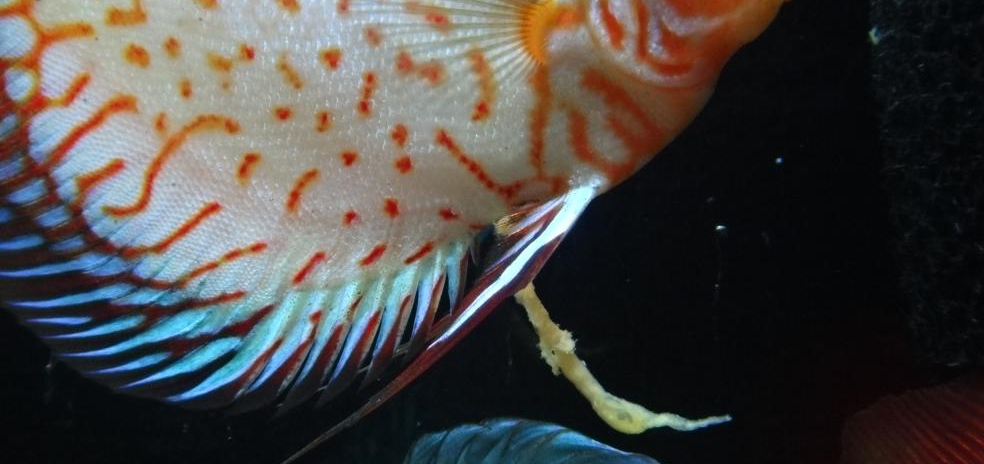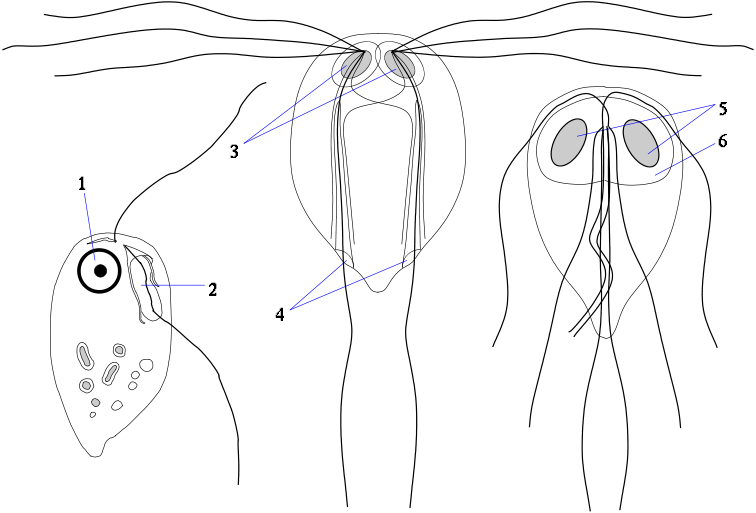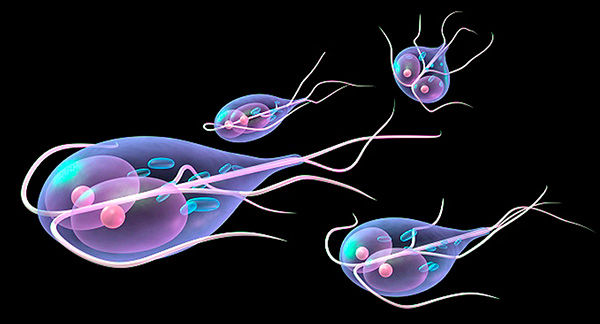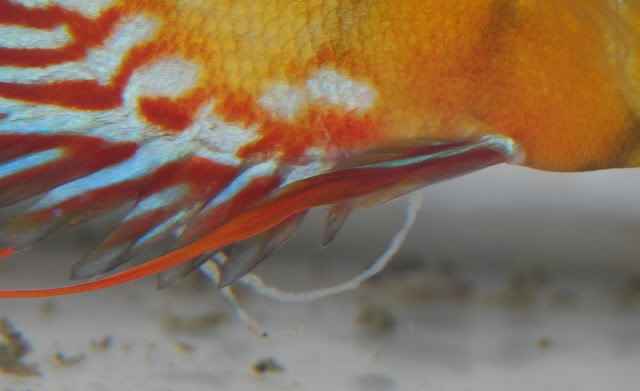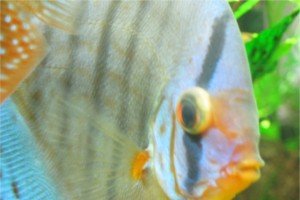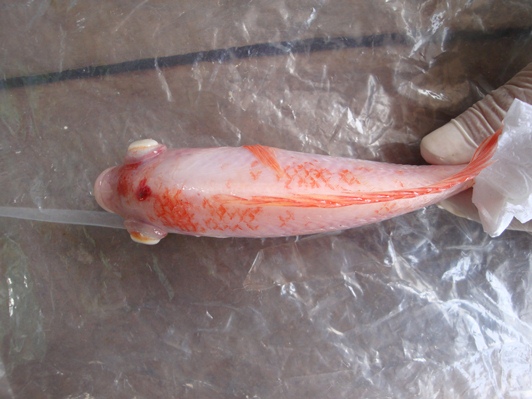The main cause of death in most imported discus fish from east Asian countries such as Thailand and Malaysia is a fatal viral disease which is colloquially known as Discus Plague or Black Disease. Sometimes, It is also called discus flu! Due to the lack of research studies associated with this strange disease, there is no scientific name or treatment for it. Dr.Tom Waltzek ( Assistant Research Professor – DVM, Ph.D., University of Florida) believes that what we call “Discus Plague” is just a herpes virus. According to my experience with importing discus and other tropical fish from Asia, this disease affects Discus, Angelfish, Banded Cichlid (Severum), and Oscars. I also found some man-made hybrids prone to this disease. In this article, I will discuss black disease, general symptoms/signs of the discus plague, and possible treatments and cures.
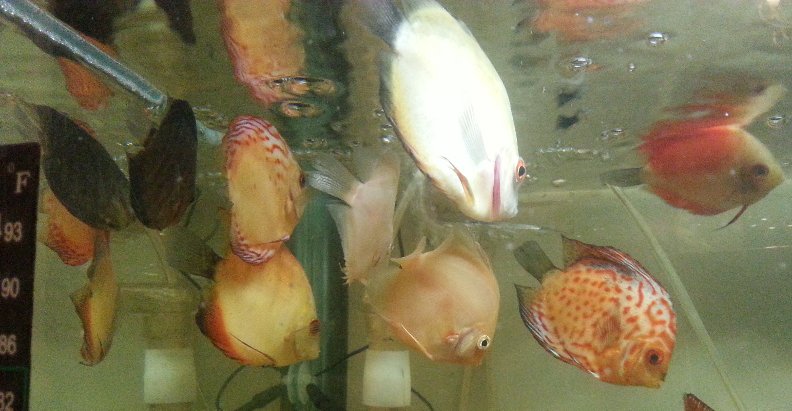
Discus Plague is a fatal condition that weakens the immune system of the fish to the point where it cannot fight off infections as it can in a healthy state.
Where did Discus Plague originate from?
The origin of discus plague has puzzled many aquarium hobbyists and discus breeders since it first came to light in the early 1985’s in European discus hatcheries. As soon as discus plague was identified, many discus hobbyists and breeders started trying to understand where the plague disease had come from and why it had spread in aquarium tanks and fish farms. Although there are various theories about the origin of the black disease in discus, most of them are nothing but personal opinions. However, if we assume that the cause of what we call discus plague is just a herpes virus, it will seem that the plague disease has been circulating among some south American Cichlids for many years before being recognized in aquariums and ornamental fish such as discus!
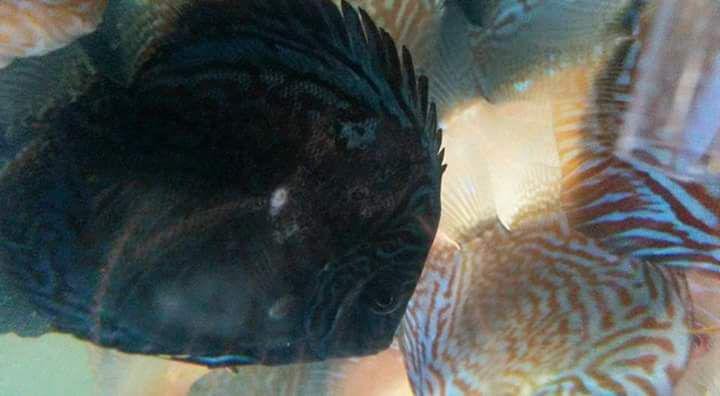
How do we know that Discus Plague is caused by a virus?
As mentioned earlier, very little scientific evidence exists about Discus Plague or Black Disease and all we know about it is based on our beliefs. Although it’s difficult to determine the origin of the discus plague, there are some signs and symptoms in infected fish that show that Discus Black Disease is probably a viral infection. One of the most important reasons for the Discus Plague to be known as a viral infection is because in most cases, discus only get a certain sub-type of plague virus just once. Actually, every time a discus recovers from an infection, its body creates a store of antibodies against that particular sub-type of virus. As more viruses exhibit this behavior, we are able to understand that the Plague of Discus Fish would be a viral infection too! However, some experts believe that other forms of the disease probably existed. so a discus that recovers from a certain form of discus plague virus is vulnerable to other forms of the illness.
How is the Discus Plague Spread in Fish?
Discus Plague is a highly contagious viral disease that can spread from tank to tank and from fish to fish. It seems that the main cause of the disease is an airborne virus that can be transmitted to the water! So all the tanks and fishes in the same room, same house, or even same building can be exposed to the Discus Black Disease virus without even having to share equipment. If you quarantine an infected discus in a separate room of the same building or house, the plague virus can go airborne and spread to all other tanks of your hatchery or farm. Needless to emphasize that introducing any new tank mates, aquarium plants, or even equipment from an infected tank can run the risk of introducing disease. And another thing is that if you plan to add new discus fish that used to have discus plague in the past, be aware of the transmission risks! Basically, I would not recommend introducing any new discus to an aquarium that used to contain the disease for 6 months or more! Survivors of the discus plague may carry the black disease virus for up to 6 months and should be kept separately.
Symptoms of the Discus Plague or Black Disease
- During the first stages, infected fish will have rapid and sometimes heavy breathing up to 3 breaths per second.
- You may notice a group of discus swimming up and down at the corner of the tank for no apparent reason. This type of behavior is very common in early stages of the plague illness especially in young discus flocks.
- Hanging in the dark corners near bottom or top of the tank.
- Leaning to one side or another at top or bottom of the tank.
- Peppering and increasing black spots on the discus skin.
- Not eating, being shy, or hiding behind aquarium decorations and filters with clamped fins.
- Turning dark or even black in color(especially in blue and brown strains).
- Excessive mucus and slime coat production.
- Scratching and rubbing against aquarium objects; they may also start darting and twitching.
- Severe fin rot and/or columnaris.
- White patches and/or points on fish’s skin; these white spots usually are caused by secondary infections such as external parasites, bacteria and fungi.
- Cloudy and/or smelly water due to large amount of slime coat and protein.
- The virus will run from one tank to another and spread across the whole farm or store in less than 2 or 3 days. The total duration of the discus plague is usually less than 7 days but it can last up to couples of weeks if there are secondary infections.
Treatment is Supportive, and There is no Cure!
Since Black Disease is a viral infection, there is no absolute cure or treatment for it. Discus plague is much like the human HIV virus. This disease tends to weaken the fish’s immune system and make the discus fish more susceptible to secondary infections and diseases that the fish would normally be able to fight off. In most cases, plague virus does not kill the discus directly, but indirectly by weakening the immune system. These secondary infections are the main causes of death and high mortality rate for infected discus. Although you can not eradicate the plague virus, the fish’s immune system can! Therefore, you can save your discus by boosting their immune system to fight the virus. Sometimes, some medication and antibiotics may be needed to control the bacterial, fungal and other possible secondary infections. Once they recover, they will have the immunity and the antibody to that certain sub-type of the disease by which they were infected with. Still, you must always beware of other types of this pathogen. Dr. Reeves believes that new discus should be kept by themselves in a separate tank for at least six weeks. Discus who have been exposed to the virus will be contagious for six weeks after the signs of the plague are gone. One way to see if the fish are going to give any type of disease to another fish is to put a fish you don’t value in the quarantine tank. If that fish doesn’t get sick, and when 6 weeks have passed, that fish is not likely to give anything to your older fish. By our experience, it is better to wait for at least 6 months before adding any new discus to your tank. In the next paragraph, you will learn about discus plague treatment and possible cures.
Medications to cure Discus Plague
If there is no certain cure and known treatment for the plague virus, should we wait and watch all sick discus die of the disease and do nothing? Of course not! Even though there is nothing can be done to the virus, we can help the fish to be able to fight back and beat the plague disease! The most important thing about this disease is that you can save your infected discus fish by helping their immune system and controlling what we believe are secondary infections. Here’s some advice for help the infected discus.
- Increasing the temperature of the water up to 92 degrees Fahrenheit can increase discus metabolic function and boost fish’s immune system. The stronger immune system, the less likely discus plague can cause havoc.
- In order to control secondary infections, a general treatment can be effective against many types of external parasites and fungal infections. Medications such as API General Cure™ Powder and AZOO Magic Disease Treatment are some of the best examples. Copper Sulfate and Acriflavine are also effective in controlling many types of external protozoan parasites such as Costia, Chilodonella, and etc., which are responsible for most skin damages during plague. Please Do NOT use Formalin and Malachite green for controling parasites during plague as Formalin decreases the dissolved oxygen while it has to be higher than usual!
- Bacterial infections are other causes of death among plague infected discus. Broad-spectrum antibiotics like Tetracyclines, Kanamycin, Neomycin Sulfate, Nitrofurazone, and etc., are just some of the common antibiotics among aquarium hobbyists and depending on the type of the infection, can be used to prevent, control, or even treat many types of (secondary) bacterial infections. The most rigorous way to decide which antibiotic to use for controlling secondary bacterial infections during discus plague condition, is to isolate the bacteria and then test for antibiotic susceptibility, which should be done in a lab by a technician. As this is a time consuming process , perhaps the best way is trial and error, along with experience.
- Heavy water change is the key, you have to do at least one 100% water change every 24 hours and before adding the new dosage of the medicines.
Potassium Permanganate
Potassium Permanganate is a powerful oxidizer that kills most (if not all) external parasites, as well as bacterial and fungal infections. Use potassium permanganate to treat discus plague only if you know what you do as a small overdose can result in fish death.
There are still many professionals and experts that believe there is no such thing as Plague Virus, Discus Plague, or Discus Black Disease, and what we call “Plague” is just a combination of other diseases and conditions. Since there is no scientific proof of the existence of discus plague, there are many different opinions about this issue. I know some far eastern discus breeders that call this disease “a 5 star disease” and as said earlier, all of these are personal opinions and experiences.

